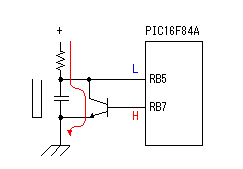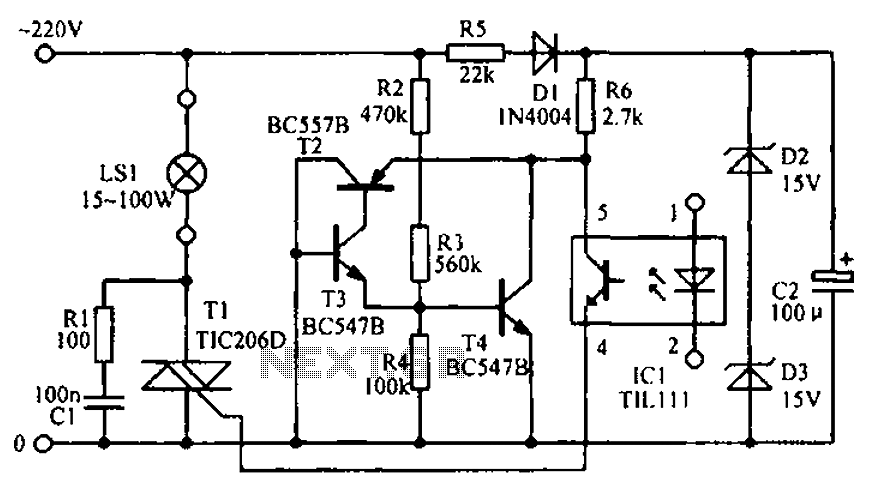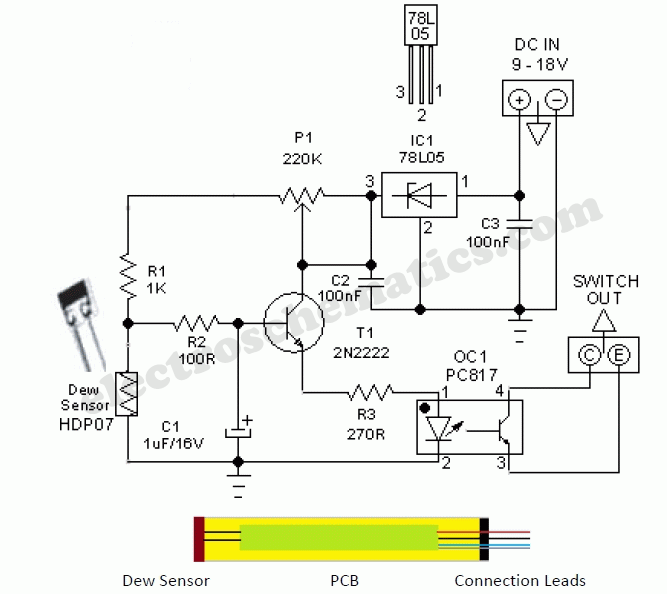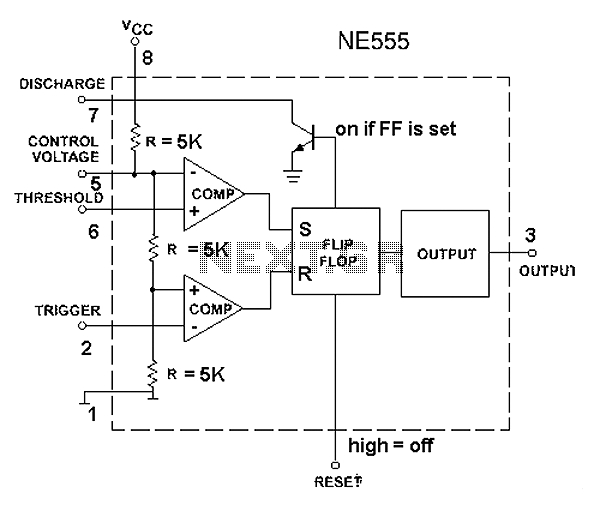
EMR4.0 application circuit
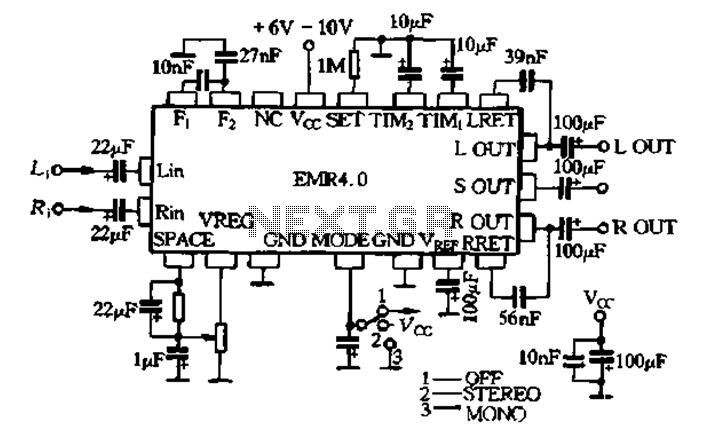
The EMR 4.0 operates with a single power supply ranging from 6V to 10V, with an optimal supply voltage of 9V. It requires effective power filtering to minimize noise, particularly when there is no signal input. The quiescent current is 11 mA. The EMR 4.0 allows a maximum input signal level of 1V. A crossover in the general assembly can cause signal cut-off if the input is too small, which may diminish processing performance and reduce the circuit's dynamic range. The circuit gain is set to 1, and the output must be connected to a buffer amplifier with a certain gain. It is recommended to connect the circuit with volume and tone controls beforehand to enhance the signal-to-noise ratio and lower distortion.
The EMR 4.0 circuit is designed to function optimally within specified voltage and current parameters. The power supply should be stable, with noise filtering implemented to ensure high fidelity during operation. The use of a 9V supply is ideal, as it balances performance and efficiency. The circuit's quiescent current of 11 mA indicates a relatively low power consumption, making it suitable for battery-operated applications.
To accommodate varying input signal levels, the EMR 4.0 is engineered to handle a maximum input of 1V. If the input signal falls below this threshold, it may lead to unwanted crossover distortion, particularly in the general assembly stage. This distortion can adversely affect the overall processing capabilities of the circuit, leading to a diminished dynamic range. Therefore, careful attention must be given to the input signal levels to ensure optimal circuit performance.
The output stage of the EMR 4.0 must incorporate a buffer amplifier to maintain signal integrity. This buffer amplifies the output without introducing additional noise, ensuring that the final output is clean and precise. Additionally, the integration of volume and tone controls prior to the output stage is crucial. These controls allow for adjustments that enhance the signal-to-noise ratio, thus further reducing distortion and improving audio quality.
In summary, the EMR 4.0 is a robust circuit that requires careful consideration of power supply, input levels, and output buffering to achieve high-performance audio processing. Proper implementation of these elements is essential for maximizing the circuit's potential and ensuring high-quality signal reproduction.EMR 4 0 with a single power supply (6V ~ 10V) power supply, power supply when 9V best. It requires better power filtering, noise lower opening the lc no signal input quiescent current of 11 deletion gas. RESEARCH contented 4-0 allow maximum input signal level is 1V, crossing over the General Assembly cause cut, too small will reduce the processing performance and reduces the dynamic range of the circuit gain o 1, which surround output must be connected to a certain gain buffer amplifier. Circuits should be connected with the volume and tone circuit before, in order to improve the signal to noise ratio and lower distortion o Figure 9-54 EMR 4.0 is the application circuit o
The EMR 4.0 circuit is designed to function optimally within specified voltage and current parameters. The power supply should be stable, with noise filtering implemented to ensure high fidelity during operation. The use of a 9V supply is ideal, as it balances performance and efficiency. The circuit's quiescent current of 11 mA indicates a relatively low power consumption, making it suitable for battery-operated applications.
To accommodate varying input signal levels, the EMR 4.0 is engineered to handle a maximum input of 1V. If the input signal falls below this threshold, it may lead to unwanted crossover distortion, particularly in the general assembly stage. This distortion can adversely affect the overall processing capabilities of the circuit, leading to a diminished dynamic range. Therefore, careful attention must be given to the input signal levels to ensure optimal circuit performance.
The output stage of the EMR 4.0 must incorporate a buffer amplifier to maintain signal integrity. This buffer amplifies the output without introducing additional noise, ensuring that the final output is clean and precise. Additionally, the integration of volume and tone controls prior to the output stage is crucial. These controls allow for adjustments that enhance the signal-to-noise ratio, thus further reducing distortion and improving audio quality.
In summary, the EMR 4.0 is a robust circuit that requires careful consideration of power supply, input levels, and output buffering to achieve high-performance audio processing. Proper implementation of these elements is essential for maximizing the circuit's potential and ensuring high-quality signal reproduction.EMR 4 0 with a single power supply (6V ~ 10V) power supply, power supply when 9V best. It requires better power filtering, noise lower opening the lc no signal input quiescent current of 11 deletion gas. RESEARCH contented 4-0 allow maximum input signal level is 1V, crossing over the General Assembly cause cut, too small will reduce the processing performance and reduces the dynamic range of the circuit gain o 1, which surround output must be connected to a certain gain buffer amplifier. Circuits should be connected with the volume and tone circuit before, in order to improve the signal to noise ratio and lower distortion o Figure 9-54 EMR 4.0 is the application circuit o
